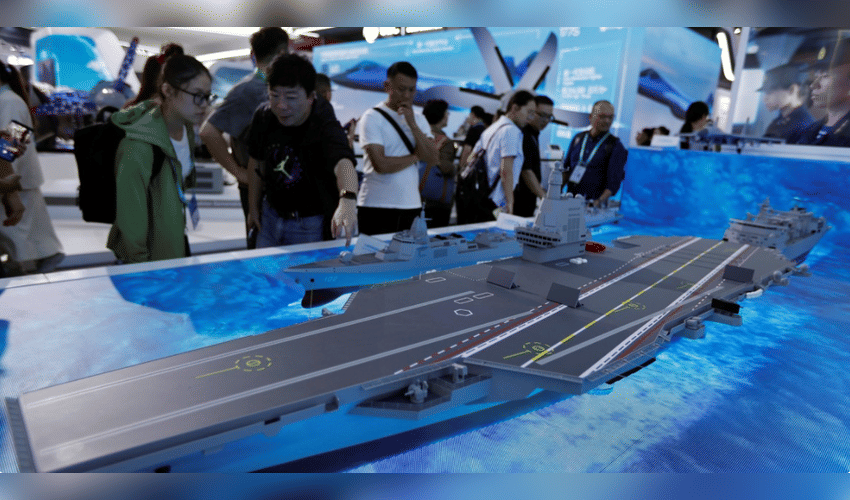Asia In News
China has officially commissioned its third aircraft carrier, the Fujian.

China has officially commissioned its third aircraft carrier, the Fujian, marking a significant step in its military modernization, though experts caution that achieving full operational capability will take time. President Xi Jinping attended the commissioning and flag-raising ceremony in Hainan province on Wednesday, touring the vessel, according to Xinhua.
Unlike China’s first two carriers, which were based on Russian designs, the Fujian features a flat flight deck and electromagnetic catapults, enabling it to launch heavier and more numerous jet fighters. During sea trials before commissioning, the Chinese navy deployed the carrier-adapted J-35 stealth fighter, the KJ-600 early-warning aircraft, and a variant of the J-15 fighter. Chinese officials and state media have hailed the carrier as a “milestone” for the navy.
State media reported that the crew saluted Xi on deck with chants emphasizing loyalty, readiness for combat, and exemplary conduct. Regional analysts will be closely observing the Fujian’s upcoming deployments to assess its path toward combat readiness, including flight operations and coordination with support vessels and submarines. Ben Lewis, founder of the open-source platform PLATracker, estimates it could take at least a year for the carrier to reach full operational status, given its largely new systems. Singapore-based analyst Collin Koh noted that recent footage showed unarmed J-15s taking off from the catapults, indicating that operations are still in early testing.
The deployment of the KJ-600 is significant, as it aids in integrating the complex elements of carrier operations and extends the carrier’s operational range. China’s earlier carriers, like the Liaoning commissioned in 2012, have primarily been used cautiously as test platforms, though they have started venturing east of Japan and toward Guam, a major U.S. military hub. Analysts expect more ambitious deployments from the Fujian in the future.
The Fujian is diesel-powered, limiting its range compared to nuclear-powered U.S. carriers, which can operate for years without refueling. Experts estimate the Fujian would require refueling after roughly 10,000 nautical miles (18,520 km). A Pentagon report last December highlighted that the Fujian and future carriers would enhance China’s power projection, particularly with specialized electronic warfare and anti-submarine aircraft, boosting the striking capability of potential People’s Liberation Army Navy carrier groups beyond China’s immediate region.
Koh suggested the Fujian will also serve a strong domestic propaganda role, with exercises likely near Taiwan, though its role in a conflict scenario remains uncertain. He described the carrier as a potential game-changer for China, while noting that many operational capabilities still need testing and refinement.



